 October 11, 2018 John E. Ross, KD8IDJ, Editor
| ||||||||
Amateur Radio Assets Active as Category 4 Hurricane Michael Makes Landfall An array of Amateur Radio public service assets was active as Hurricane Michael -- now a tropical storm -- made landfall near Mexico Beach on the Florida Panhandle on October 10, with devastating 155 MPH winds. The storm is believed to be the first Category 4 or stronger hurricane to hit the Florida Panhandle, and the National Hurricane Center (NHC) warned of life-threatening storm surge as well as hurricane-force winds and heavy rainfall.
WX4NHC, the Amateur Radio at the National Hurricane Center, was active to receive observed weather information and data via Amateur Radio to aid forecasters. The VoIP Hurricane Net activated on October 10 to support communication with the National Hurricane Center. The Southern Territory Salvation Army Team Emergency Radio Network (SATERN) stood down on October 11. SATERN was requested to provide Amateur Radio operators for Pensacola, Panama City, Tallahassee, and Tampa, as well as some local units in Georgia, and at Divisional Headquarters in Atlanta. The ARRL North Florida and West Central Florida sections assisted SATERN with additional operators in Pensacola, Panama City, Tallahassee, and Tampa. North Florida Section ARES was at Level 1 (full) activation. Miller Norton, W4EMN, the Communications Watch Officer at the Duval County Emergency Operations Center (EOC) in Jacksonville, Florida, was monitoring SARnet -- a UHF-linked repeater network in Florida -- when he heard an urgent call for help that needed to be sent to the State EOC in Tallahassee. All other forms of communication were out, and Norton was able to relay the message to via Amateur Radio. He also passed along messages and requests from the Jackson County EOC to the American Red Cross. Norton said officials in Tallahassee and Jackson County were both incredibly grateful for the way the SARnet system functioned during the weather emergency. Jackson County Emergency Coordinator Ricky Whittington, KD4AST, is deployed to the county EOC in Marianna.
"We took a direct hit by the center of the storm at 140 MPH," he told Clay County ARES Assistant Emergency Coordinator and Public Information Officer Scott Roberts, KK4ECR. "[The] county maintenance building across the road from the EOC was picked up and slammed into the north side and over the roof of the EOC just prior to the eye passing over." The incident took out the HF antenna, which has since been restored. Whittington said the internet failed, as did cell service for a while. Hams have been passing material and resource orders to the State EOC via HF and SARnet. Whitting reported "total devastation of Bay, Jackson, and Gulf counties," with loss of electrical power and water service, in addition to damage in Franklin, Holmes, and Leon counties. "[The] only mode of communications after the eye came across was ham radio, until we got minimal cell service a few hours ago," he reported. The ARRL Emergency Response Team has been coordinating with Field Organization leadership in ARRL Sections affected by the storm, as well as with WX4NHC, the HWN, VoIP Hurricane Net, Department of Homeland Security SHARES, and US Army MARS. FAA Reauthorization Act of 2018 Overhauls Marking Requirements for Short Rural Towers Thanks to ARRL efforts on Capitol Hill, language in the 2018 Federal Aviation Administration (FAA) Reauthorization Act, just signed by President Donald Trump, resolves the issue of problematic or preclusive rules affecting some rural Amateur Radio towers. The previous FAA Reauthorization Act of 2016 had instructed the FAA to enact tower-marking requirements, similar to those in some state statutes, aimed at improving aircraft safety in the vicinity of "There is no evidence whatsoever that even one Amateur Radio antenna below 200 feet has ever been involved in an aviation accident," ARRL General Counsel Chris Imlay, W3KD, said. "To impose painting and lighting requirements on Amateur Radio antennas between 50 and 200 feet tall would preclude many, if not most, of the exurban, rural, and, in some cases, suburban Amateur Radio antennas that are and will be sited outside incorporated towns and cities. This would ironically defeat the entire reason such antenna facilities are sited in those environments: because rural and exurban areas are where such antennas are permitted and the few areas where antennas are not precluded entirely by private land use regulations." Prior to 2017, per long-established FAA regulations, unless such short radio towers were located within the glide slope of airports or heliports, they were not required to be painted or lighted. After attempting to address the issue through the FAA, ARRL's legislative team met with staff members of Senator Jim Inhofe (R-OK) and other lawmakers and their staffs associated with the congressional committees of jurisdiction. Senator Inhofe -- himself a pilot -- was of the view that the 2016 legislation was excessive and that exemptions should exist for both broadcast and Amateur Radio antennas and support structures. "We worked with our close allies at the National Association of Broadcasters (NAB), [who were] afraid that this Imlay said Section 576 of the large 2018 FAA reauthorization now requires that the only towers less than 200 feet tall that have to be painted and lighted are meteorological aids and those within the glide slope of an airport or heliport. The remainder of such towers in rural or agricultural areas lower than 200 feet need to only be included in an FAA-maintained database, which will be updated by the owners of such towers. Imlay credited members of the ARRL Legislative Advocacy team, as well as Senator Inhofe and ARRL's broadcast and land mobile association partners for getting the language revised in the new, 5-year Reauthorization Act. "We consider this a big success for Amateur Radio," Imlay said, "and it would not have been possible but for the visibility that has been achieved for ARRL through our active Capitol Hill advocacy for the Amateur Radio Parity Act." US Ham-Astronaut, Russian Cosmonaut Safe in Wake of Soyuz Launch Failure A Russian Soyuz spacecraft crew launch to the International Space Station (ISS) suffered a booster failure that resulted in an emergency flight abort shortly after lift-off from Kazakhstan on October 11, but the crew is safe. On board the "Shortly after launch, there was an anomaly with the booster and the launch ascent was aborted, resulting in a ballistic landing of the spacecraft," Bridenstine said. "Search-and-rescue teams were deployed to the landing site. Hague and Ovchinin are out of the capsule and are reported to be in good condition." The pair has since been transported to the Gagarin Cosmonaut Training Center in Star City. This was Hague's first launch and Ovchinin's second. Early this month, NASA issued a statement regarding the late-August discovery of a 2-millimeter hole in the wall of the Soyuz capsule that is now docked to the ISS. The resulting air pressure leak has since been repaired. There is no indication the launch failure and the mystery hole in the last Soyuz launched are connected. Roscosmos said the hole was not drilled by accident, and posited that it may have been drilled by a technician on the ground. Roscosmos Director General Dmitry Rogozin earlier had ruled out a manufacturing defect.
NASA and Roscosmos launched an investigation, and a November spacewalk was planned to gather more information. In the wake of the Soyuz failure, operations to transport ISS crew members have been suspended. The current ISS crew of cosmonaut Sergey Prokopyev and astronauts Serena Auñón-Chancellor, KG5TMT, and Alexander Gerst, KF5ONO, is scheduled to return to Earth in December. The Doctor Will See You Now! "Winterizing Your Station" is the topic of the new (October 11) episode of the "ARRL The Doctor is In" podcast. Listen...and learn!
Every 2 weeks, your host, QST Editor-in-Chief Steve Ford, WB8IMY, and the Doctor himself, Joel Hallas, W1ZR, will discuss a broad range of technical topics. You can also email your questions to doctor@arrl.org, and the Doctor may answer them in a future podcast. Enjoy "ARRL The Doctor is In" on Apple iTunes, or by using your iPhone or iPad podcast app (just search for "ARRL The Doctor is In"). You can also listen online at Blubrry, or at Stitcher (free registration required, or browse the site as a guest) and through the free Stitcher app for iOS, Kindle, or Android devices. If you've never listened to a podcast before, download our beginner's guide. International Space Station Crew Member Fires Up NA1SS to Seek Random Contacts "Hello, America. This is the International Space Station. Who's out there?" And with that "CQ" of sorts on 145.800 MHz, NASA astronaut Serena Auñón-Chancellor, KG5TMT, M.D., spent some time at the helm of NA1SS on October 6 making casual, random contacts -- something that's fairly rare these days. The ISS was on a pass that took the spacecraft up along the east coast of the US at the time. In response to a question, Auñón-Chancellor, who has been on station since June, told one caller that she's been floating the entire time she's been in space.
"We float every day. Float to work, float back to sleep. It is awesome," she said. Scott Chapman, K4KDR, of Montpelier, Virginia, edited a clip of downlink chatter by the 42-year-old flight surgeon and flight engineer. "During most passes of the ISS where I'm working with the packet digipeater on 145.825, I also monitor 145.800 just in case there is any activity on that frequency," Chapman said in a post to AMSAT-BB. "For the first time in my personal experience, today one of the astronauts was randomly calling to see if anybody was listening. Of course I tried to reply on 145.800 simplex, but there are a number of possible uplinks, and none of them were programmed into my radio. They are now! It was a real thrill and, like so much of this hobby, a learning opportunity." Auñón-Chancellor is aboard the ISS as part of the Expedition 56/57 crew and is scheduled to return to Earth in December. The Amateur Radio FM voice frequencies for stations in ITU Regions 2 and 3 are 145.800 MHz down and 144.490 MHz up. For stations in Region 1, the uplink frequency is 145.200 MHz. MARS to Support Defense Department Radio Communication Readiness Exercise Military Auxiliary Radio System (MARS) members will support a Department of Defense HF radio communication exercise on October 24 - 26. The readiness exercise will test the ability to communicate via voice and military standard communication protocols, simulating the loss of conventional communication systems.
During the exercise, MARS members will communicate with Amateur Radio operators on all five 60-meter channels, as well as on other Amateur Radio bands. Contact MARS for more information regarding this exercise. As a simulation, this exercise will not affect any public or private communications or infrastructure. The exercise will end at 2359 UTC on October 26. Additionally, MARS members will participate in the HF automatic link establishment (ALE) on-the-air exercise taking place on October 12 - 22. Climber Dies in Amateur Radio Tower Collapse A young Tennessee father of five is dead after the Amateur Radio tower on which he was working collapsed due to a guy anchor letting go. Thirty-year-old Ken Waddell was killed on September 29 while attempting to erect a 70-foot Rohn 25G tower in Cookeville, Tennessee. A professional tower climber, Waddell handled the tower job on a freelance basis, rather than for his employer.
According to media accounts, the new guy anchors were checked in advance of putting up the tower. Waddell was getting ready to attach a second set of guys at 70 feet when a guy at the 40-foot level let go, taking him to the ground on the section where he was attached. He was the only person on the tower when it fell, and died at the scene. Waddell was the sole financial provider for his family, and a GoFundMe campaign has been established. The Tower Family Foundation and the Hubble Foundation have also reached out to assist Waddell's widow, Cadie, and their five children. Both the Tower Family Foundation and the Hubble Foundation are dedicated in part to providing financial assistance and support to the families of tower workers injured or killed in tower-climbing mishaps. -- Media accounts Minnesota Club Provides Support for "Ride The Ridges" Cycling Event Members of the Winona (MN) Amateur Radio Club (WARC) provided communication support in mid-September for 300 riders taking part in the "Ride The Ridges" bicycle tour. WARC said the region's scenic hills and deep valleys present a communication challenge. Members patrolled four routes -- ranging from 23 to 105 miles -- as well as seven rest stops, working voice communication via a UHF repeater near Winona and the Riverland Amateur Radio Club VHF repeater 30 miles away in Wisconsin. APRS was used to track SAG and sweep vehicles and also offered messaging capability.
As a public awareness effort, a large-screen display at the ride's start and end showed friends and family the progress of riders. With cell coverage impaired by the terrain, the club installed two temporary digipeaters to assure constant contact with the APRS units. "We can bring technology to these events that the sponsoring organizations don't have other access to," said Dan Goltz, WK0W, of WARC. "We are there to enhance the event, and to provide a service, not for our benefit but for theirs." Fifteen club members volunteered for the September 15 event. Ride the Ridges is a project of the Winona Rotary Club. IARU Region 1 Volunteers and Partners Getting Behind WRC-19 50 MHz Agenda Item International Amateur Radio Union (IARU) volunteers are continuing their work toward a favorable outcome for World Radio Conference 2019 (WRC-19) Agenda Item 1.1, which seeks a 6-meter allocation for the Amateur Radio Service in Region 1 in the International Telecommunication Union (ITU) Radio Regulations Table of Frequency Allocations. The effort is aimed at aligning the band with the 50 MHz allocations in ITU Regions 2 and 3. In a news release, IARU Region 1 (IARU R1) President Don Beattie, G3BJ, described extensive work in various forums and the ITU aimed at gaining support for a 6-meter band in Region 1, rather than the current country-by-country allocations.
"The Amateur Service has met strong opposition from a few nation states who argue that the 50 MHz band is already allocated to other services in their countries -- following the closure of many broadcasting stations in recent years which operated in this band -- and believe that sharing the band presents problems," Beattie said. CEPT Project Team D has prepared two Agenda 1.1 options. The majority of CEPT administrations actively participating in discussions preferred one proposal for a 2 MHz secondary allocation. The second option, the result of a major compromise and preferred by IARU and the European Radio Amateurs' Organization (EURAO), would see a 500 kHz primary allocation of 50.0 - 50.5 MHz, paired with a secondary allocation of 50.5 - 52.0 MHz. Beattie said either option would be an improvement over the status quo. Additional meetings lie ahead, including a CEPT Conference Preparatory Group (CPG) meeting in November, and the ITU Conference Preparatory Meeting (CPM) in February. "It is hoped that the cooperation between IARU and EURAO will continue in future CEPT activities, which are relevant to Amateur Radio," Beattie said. Radio Amateurs among Radio Club of America 2018 Award Recipients and Fellows The Radio Club of America (RCA) has named well-known academic, entrepreneur, contester, and DXer Theodore "Ted" Rappaport, N9NB, as the recipient of the 2018 Armstrong Medal. The Armstrong Medal is the RCA's most prestigious honor. Rappaport is being honored for "outstanding achievements and lasting contributions to the radio arts and sciences and wireless communications." When the RCA began its
recognition of outstanding achievement, its first award was presented to Major Edward H. Armstrong for his invention of circuits that make AM and FM radio possible, and for his lifetime of championing work that established the foundation for modern radio technology. Inventor and entrepreneur Nathan "Chip" Cohen, W1YW, of fractal antenna and cloaking technology fame, will receive the RCA's Lee de Forest Award for "significant contributions to the advancement of radio communications." The award's namesake, de Forest, is credited with inventing the Audion vacuum tube as an amplifier in radio circuits. De Forest also popularized the word "radio" in the US, in favor of the European term "wireless."
Radio amateurs are among the recipients of several other 2018 RCA awards: Joseph Yurman, N2PFO: The Fred M. Link Award "for notable achievements in land mobile radio communications." Mark Allen, W6PC: The Edgar F. Johnson Pioneer Citation "in recognition for noteworthy contributions to the success of RCA or the radio industry." Carroll Hollingsworth, K5CTT: The RCA Presidents Award "for service and dedication to the Radio Club of America." A complete listing of RCA Awards and previous recipients can be found on the RCA website. Founded in 1909, the Radio Club of America is the oldest, most prestigious group of wireless communications professionals in the world. Members are dedicated to the wireless art and science for the betterment of society. The Radio Club of America is a 501(c)(3) nonprofit organization. The RCA 2018 Awards Banquet and Technical Symposium will take place on Saturday, November 17, at the Westin New York Times Square in New York City. Read more. In Brief...
The New England Amateur Radio Festival (NEAR-Fest) and the Deerfield Fair Association will present a science and technology exposition for young people. The event at the Deerfield Fairgrounds, in Deerfield, New Hampshire, will take place Friday, October 12, and Saturday, October 13, as part of NEAR-Fest XXIII. Each spring and fall, the New England Tech Trek (NET2) provides middle- and high-school students with an informal, hands-on introduction to real-life applications and the fun of science, technology, engineering, and math (STEM). The display will feature Amateur Radio and other technology, including a high-altitude balloon with radio telemetry, robotics, Raspberry Pi projects, radio direction finding, and software-defined radios. The Nashua (NH) Area Radio Society (NARS) will offer five "Get on the Air" stations that attendees can use. Admission to the NET2 expo is free.
The International Amateur Radio Union Monitoring Service (IARUMS) reports interference on 40 meters from various Russian sources. The Russian coastal over-the-horizon (OTH) radar "Sunflower" was very active on 40 meters and audible in Europe in the evenings, transmitting FM on pulse. The site is believed to be northeast of Vladivostok. IARUMS Region 1 Coordinator Wolf Hadel, DK2OM, said it was monitored in September. In addition, a Russian ship was observed transmitted on 7,110 kHz on F1B with 50 baud and 200 Hz shift. The vessel was believed to be in the vicinity of Cyprus and on the air daily in September. Another Russian ship was heard on September 18, transmitting AT3004D with 12 × 120 baud PSK2A on 7,179 kHz with a 2.6 kHz bandwidth, also in the area of Crete. And a Russian military system, believed to be near Moscow, was heard transmitting on 7,198 kHz in AT3004D test mode. Elsewhere, fishing crews often were monitored on 3,500; 3,535; 3,540; 3,560; 3,585; 3,590; 7,000 kHz, and 14,320 USB. The K7RA Solar Update Tad Cook, K7RA, Seattle, reports: Last week, we reported a return of sunspot activity on September 29, after a 16-day absence, but the new activity lasted only 6 days. The average daily sunspot number declined from 9.6 to 1.6, while the average daily solar flux rose slightly from 68.4 to 68.9. The average planetary A index increased from 7.7 to 14.1, while the mid-latitude A index jumped from 6.1 to 10.3.
The predicted planetary A index is 12, 8, 5, 12, and 8 on October 11 - 15; 5 on October 16 - 17; 10, 25, 14, 8, and 12 on October 18 - 22; 8 on October 23 - 25; 10 on October 26; 5 on October 27 - November 2; 22 and 35 on November 3 - 4; 15 on November 5 - 6; 10, 8, 5, 10, and 8 on November 7 - 11; 5 on November 12 - 13; 10, 25, 14, 8, and 12 on November 14 - 18; 8 on November 19 - 21; 10 on November 22, and 5 on November 23 - 24. Conditions will probably continue at somewhat marginal levels because of weak solar activity. It is widely believed that Cycle 24 should reach solar minimum in 2020. The NOAA Space Weather Prediction Center (SWPC) has the latest projections. Sunspot numbers for October 4 - 10 were 11, 0, 0, 0, 0, 0, and 0, with a mean of 1.6. The 10.7-centimeter flux was 67.2, 68.7, 68.6, 69.5, 68.8, 69.5, and 69.8, with a mean of 68.9. Estimated planetary A indices were 4, 9, 6, 24, 21, 17, and 18, with a mean of 14.1. Estimated mid-latitude A indices were 4, 8, 5, 13, 16, 14, and 12, with a mean of 10.3. Share your reports or your propagation observations. Just Ahead in Radiosport
See the ARRL Contest Calendar for more information. For in-depth reporting on Amateur Radio contesting, subscribe to The ARRL Contest Update via your ARRL member profile email preferences. Upcoming ARRL Section, State, and Division Conventions
Find conventions and hamfests in your area
. .
Subscribe to...
Free of charge to ARRL members...
| ||||||||
.jpg) The Hurricane Watch Net (
The Hurricane Watch Net (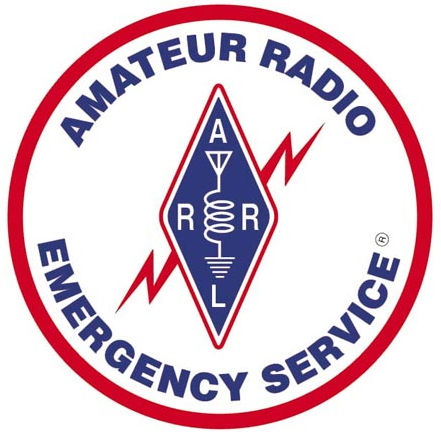
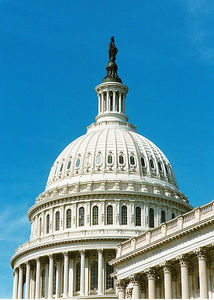 meteorological evaluation towers (METs). These towers are typically between 50 and 200 feet and set up in rural areas, often on short notice. In the wake of fatal crop-dusting aircraft collisions with METs, the National Transportation Safety Board (NTSB) had recommended that states institute laws, sometimes called "crop-duster" statutes, requiring marking and registration of METs. While some state crop-duster laws exempted ham radio towers, federal regulations dating to the 1996 FAA Reauthorization Act did not, and ARRL had expressed its concerns since.
meteorological evaluation towers (METs). These towers are typically between 50 and 200 feet and set up in rural areas, often on short notice. In the wake of fatal crop-dusting aircraft collisions with METs, the National Transportation Safety Board (NTSB) had recommended that states institute laws, sometimes called "crop-duster" statutes, requiring marking and registration of METs. While some state crop-duster laws exempted ham radio towers, federal regulations dating to the 1996 FAA Reauthorization Act did not, and ARRL had expressed its concerns since..jpg) legislation would have a large adverse effect on short broadcast towers," Imlay recounted. "We also worked with the Association of American Railroads, which has hundreds of short towers along rail lines in rural areas that would have been affected."
legislation would have a large adverse effect on short broadcast towers," Imlay recounted. "We also worked with the Association of American Railroads, which has hundreds of short towers along rail lines in rural areas that would have been affected.".JPG) Soyuz MS-10 were US Astronaut Nick Hague, KG5TMV, and Russian Cosmonaut Aleksey Ovchinin. NASA Administrator Jim Bridenstine promised "a thorough investigation."
Soyuz MS-10 were US Astronaut Nick Hague, KG5TMV, and Russian Cosmonaut Aleksey Ovchinin. NASA Administrator Jim Bridenstine promised "a thorough investigation.".jpg) "[This] indicates that this is an isolated issue which does not categorically affect future production," the NASA statement said. "This conclusion does not necessarily mean the hole was created intentionally or with mal-intent."
"[This] indicates that this is an isolated issue which does not categorically affect future production," the NASA statement said. "This conclusion does not necessarily mean the hole was created intentionally or with mal-intent." Sponsored by
Sponsored by 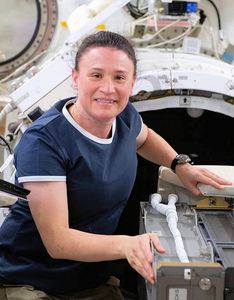
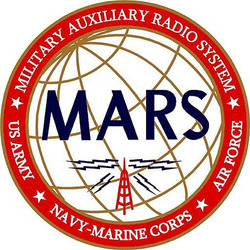 MARS members will interface with the Amateur Radio community to collect information at the county level regarding publicly available information. At 0001 UTC on October 24, Amateur Radio operators are asked to monitor 60-meter channel 1 (5,330.5 kHz, USB) for a high-power broadcast of updated information regarding this exercise and how the Amateur Radio community can participate.
MARS members will interface with the Amateur Radio community to collect information at the county level regarding publicly available information. At 0001 UTC on October 24, Amateur Radio operators are asked to monitor 60-meter channel 1 (5,330.5 kHz, USB) for a high-power broadcast of updated information regarding this exercise and how the Amateur Radio community can participate.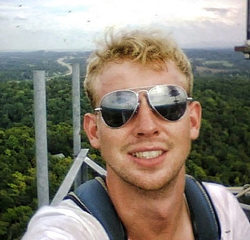
.jpg)
.gif) "IARU has represented the global voice of Amateur Radio in these meetings, arguing that new applications in Amateur Radio require significant bandwidth at 50 MHz and has set out a proposed utilization of the band which supports its claim," Beattie said. He added that the IARU has also engaged in extensive work on sharing studies using propagation models recognized by the ITU and the European Conference of Postal and Telecommunications Administrations (CEPT).
"IARU has represented the global voice of Amateur Radio in these meetings, arguing that new applications in Amateur Radio require significant bandwidth at 50 MHz and has set out a proposed utilization of the band which supports its claim," Beattie said. He added that the IARU has also engaged in extensive work on sharing studies using propagation models recognized by the ITU and the European Conference of Postal and Telecommunications Administrations (CEPT).(1).jpg)
-th.jpg)
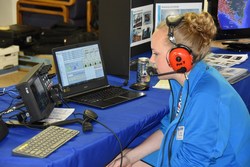
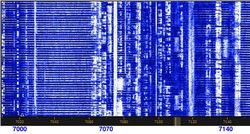
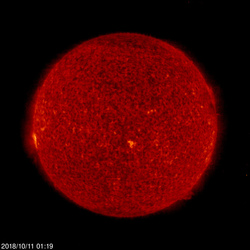 Predicted solar flux is 72 on October 11 - 17; 71 on October 18; and 69 on October 19 - November 24.
Predicted solar flux is 72 on October 11 - 17; 71 on October 18; and 69 on October 19 - November 24.







